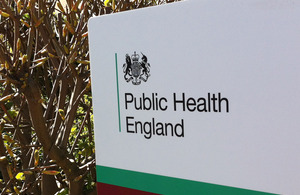Reducing alcohol related health harms in Leeds
The introduction of Local Licensing Guidance in South Leeds has resulted in control measures being agreed by new licensees.

Background
South Leeds is an area of deprivation, with increasing numbers of outlets to buy alcohol, but a decline in the number of pubs. It is a diverse area with a transient population, although still predominantly white British. There is a higher than average proportion of children and young people. The number of JSA claimants and secondary school absenteeism is higher than the average for Leeds. There is a higher number of young people aged 16 to 24 Not in Education, Employment or Training (NEET) (14.2%) compared to the rest of Leeds (7%).
Case in brief
NHS Leeds (as was) and the local community officers had increasing concerns about the availability of alcohol in the area, along with an increase in street drinking, and generalized disorder. The publication of the Joint Strategic Needs Assessment highlighted a disparity in the life expectancy of residents in the area in comparison with other areas in Leeds and the national average. One contributory factor for a lowered life expectancy is alcohol misuse. There was a need to affect a change in this area, to reduce health harms specifically in relation to alcohol and obesity. Work was on-going regarding the cessation of smoking as rates of smoking in this area are much higher than the national average.
The approach used
The Leeds City Council south Leeds area team, specifically the community safety manager and the health and wellbeing manager, formed the South Leeds Alcohol Group, a multi-agency action group. The aim of the group was to reduce the health harms in the area which were linked with alcohol. The group consisted of the police, health, community safety, treatment services, planning, environmental health and licensing. The group met monthly to look at a number of approaches.
The availability of alcohol was seen as crucial, but there were not enough on-licensed premises to warrant a cumulative impact policy. The group looked at alternative options and considered licensing as a solution. Until 2012, licensing authorities had no ability to ensure that operators had regard for the local area when making their application. This changed in 2012 with the adoption of a new statutory guidance issued by the government. This opened the door for local guidance to assist applicants making their application and elected members making licensing decisions. The group developed Local Licensing Guidance specifically for postcode areas of LS10 and LS11, also known as South Leeds.
In the past 12 months, 10 applications for premises selling alcohol off the premises have been received for this area and of those premises 9 have agreed to control measures and one application was withdrawn prior to hearing.
The data
- Joint Strategic Needs Assessment 2012, NHS Leeds
- West Yorkshire Observatory
- Entertainment Licensing – licensing statics
- Leeds Alcohol Harm Reduction Action Plan 2011-2015
- Alcohol Needs Assessment Info 2011
- Tackling Alcohol and Community Safety in Leeds – Summary Findings
Outcome
- the Local Licensing Guidance was developed
- 10 applications have been considered under this guidance
- 9 applications were granted with agreed conditions, 1 application was withdrawn
- further Local Area Guidance is being developed for the inner west (Armley) and inner east (Harehills) areas